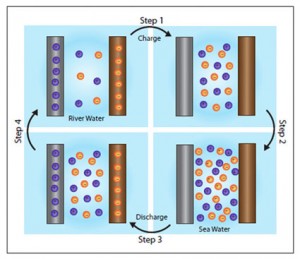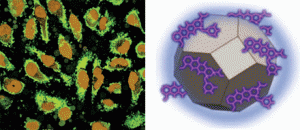I found an article called New Battery Produces Energy Using the Ions in Plain Old Seawater. Like my article on banana peels removing toxic metals from water, it seems as though I am interested in things that use natural things to do things that we need.
This news article explores the science behind rechargeable battery, which uses a a combination of seawater and freshwater to generate usable electricity. This concept, like our HIV paper that we researched, is not feasible in real life – such as if we install a rechargeable battery into every ocean-discharging river in the world, simply does not make sense. If, however, we allowed our imagination to run wild, we would be able to produce 2 terawatts of electricity, which is 13% of worldwide electricity use. Researchers claim that this sort of technology is “ simple to fabricate and could contribute significantly to renewable energy in the future.”
So how does it work exactly?
There is a gadget that generates current by bridging the difference between the salinity in the seawater and freshwater. In the beginning, the fresh water is funneled into the batter, which has positive and negative electrodes. Once it is charged by an external energy sources, there is an exchange between the freshwater and seawater, which adds ions to increase the electrical potential, or voltage, between the two electrodes. According to Stanford News, it makes it possible to extract more electrical energy than the energy it takes to charge the battery itself.
Scientist, Larry Kostiuk from the University of Alberta claims that the first way to generate sustainable electricity was a 160 years, when scientists created electrical currents by pumping water through glass micro channels. This new discovery seems to me to be a vast improvement.
I believe that we need to do more research into green technology, I feel as though humans have evolved to a point where it’s unacceptable to not include the whole picture (as in keeping it green) when inventing something new. I would, however, enjoy reading articles as such and hearing that they actually implemented it rather than simply discovering it and stating that it doesn’t work in reality.







